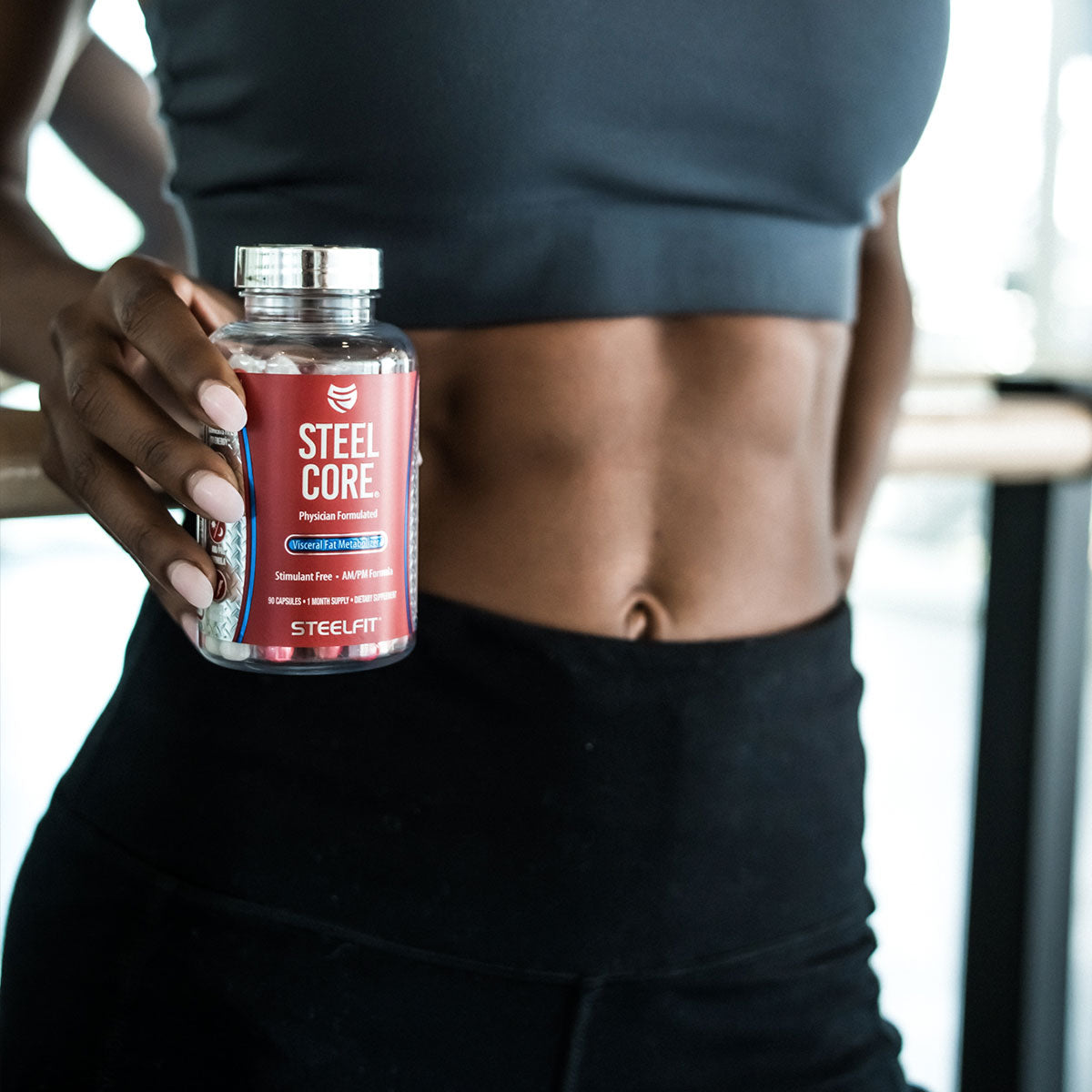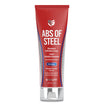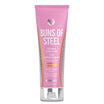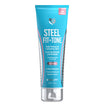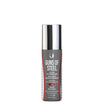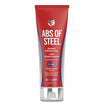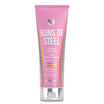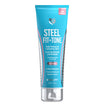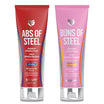If you want to know what TeaCrine® is, what it does, how it synergizes with caffeine, and what are the benefits of TeaCrine® supplementation, then you want to read this article.
If you’re like most people, you start your day hitting snooze a time or two (or three), before finally dragging yourself out of bed and stumbling into the kitchen to turn on the coffee pot.
In just a few minutes, you are rewarded with a delicious black elixir that brings with it a rich, bold flavor, and (more importantly), the promise of energy, mood enhancement, and heightened cognitive function. (And yes, we realize you probably needed a sip of coffee to make it all the way through that previous sentence.)
What is it about coffee that makes us transform from a stumbling, bumbling drone into an individual ready to tackle the day head on?
Caffeine.
Caffeine is well-known for its prominent energy boost as well as the motivation it imbues in every one of us to get things done.
But, caffeine isn't perfect. There are some potential downsides to caffeine, including habituation and the potential for a severe energy crash.
Recently though, a new compound has entered the supplement scene. One that mimics caffeine in form and function, but stands on its own and has a few things going for it that caffeine doesn’t.
That compound is none other than TeaCrine®.
In this article, we'll tell you everything you want to know about TeaCrine®, including how it can make your morning cup of coffee (or a scoop of pre-workout) that much better!
To understand what TeaCrine® does, how it works, and how it complements caffeine, we first need to begin by discussing the neurotransmitter adenosine.
What is Adenosine?
Adenosine is a nucleoside composed of adenine and d-ribose.<1> It's naturally occurring in every cell of the human body and serves many critically important roles in the body, not the least of which is as a building block for DNA and RNA.
Adenosine acts as an adenosine receptor agonist, which is a fancy way of saying that when the adenosine molecule binds to the adenosine receptor, it switches it "on."
Pharmacologically speaking, adenosine activates four types of adenosine receptors (A1, A2A, A2B, and A3) found throughout the nervous system.
It also induces relaxation of vascular smooth muscles by reducing calcium uptake. Adenosine does this by inhibiting the influx of calcium and activating adenylate cyclase in smooth muscle cells.<1>
Adenosine has also been found to act as a vasodilator in different vascular beds throughout the body as well as an analgesic (pain-reliever).
This versatile molecule also forms the backbone of the cellular currency of energy production -- ATP (adenosine triphosphate).
And, to top it off, there's also one other very important thing adenosine does -- it makes us feel tired and sluggish.
As ATP is broken down, adenosine begins to accumulate in extracellular space. When enough of it builds up, it activates adenosine receptors (specifically A1 receptors) which inhibits the release of several important neurotransmitters, many of which are responsible for keeping us awake, alert, upbeat, and cognitively “with it.”
The list of neurotransmitters inhibited by adenosine receptor activation includes<4>:
- Acetylcholine (the “learning neurotransmitter”)
- Dopamine
- Noradrenaline (norepinephrine)
- Serotonin (5-HT)
- Glutamate (an excitatory neurotransmitter)
Now, let's say that you do want to be awake, alert, and "with it." It stands to reason that you would want to do something (or take something) to prevent or inhibit adenosine from binding to the adenosine receptors and making you feel tired, sluggish, and fuzzy-headed.
Enter adenosine receptor antagonists.
These compounds are structurally similar to adenosine and can bind to adenosine receptors, effectively “clogging” the receptor “docking station” and preventing the adenosine molecule from binding.
As a result of this inhibition, the other neurotransmitters can release and activate their respective receptors, allowing you to feel upbeat, alert, energetic, and cognitively on point.
The most widely consumed and well-known adenosine receptor antagonist is caffeine.
Each one of you reading this guide is familiar with caffeine and its stimulating, mood-elevating qualities.
You also may have experienced some of the minor “drawbacks” that come with regular caffeine usage as well.
The Drawbacks of Caffeine Usage
For all the benefits of caffeine, it isn’t a perfect molecule. Far from it in fact.
Here are a few of the most common downsides to caffeine consumption:
Habituation
The relatively rapid onset of tolerance accompanies chronic use of caffeine. What this means is that your body becomes accustomed to caffeine and to keep experiencing the "stimulatory" and mood-enhancing effects of the compound, you have to increase the amount you consume.
Specific properties, such as increased alertness or athletic performance, do not dissipate with continuous usage, but the "pow" factor and prolific mood elevation do.
This is why you many people choose to cycle off caffeine now and then...though no conclusive data is indicating that you need to.
Sensitivity
Some people just flat out do well with caffeine. Even just a little bit makes them feel on edge, anxious, and/or jittery.
While caffeine has many beneficial qualities about it, if consuming the slightest bit makes you anxious, nervous, or edgy, then it doesn't matter. You'll be too "off" to get any of the actual benefits from caffeine.
Energy Crash
Caffeine excels when it comes to providing a robust, immediate boost in energy. While it takes a good 45-60 minutes to reach peak levels in the blood, some individuals begin experiencing its stimulatory qualities with 15-20 minutes of ingestion. As great as the surge in energy, mood, and motivation are, it can be short-lived, and the comedown can be rather harsh for some folks. Research notes that the euphoric "high" from caffeine lasts only around 2.5 hours.<5> After the "high" from caffeine is over, there's an abrupt "bottoming out" experienced by some that's referred to as the “caffeine crash.” Notable symptoms of this condition include extreme tiredness, brain fog, irritability, and dozing off.
Sleep Disruption
Despite the "high" from caffeine lasting only 2.5 hours or so, it's half-life is 5.5-6 hours. What this means is that if you consume 200mg of caffeine at 3 PM, by 9 PM your body still has 100mg of caffeine, it's dealing with.
Now, for some users, this isn’t enough to disrupt their sleep, and they can nod off perfectly fine and good. However, for a great many people, consuming caffeine too close to bedtime negatively impacts their sleep, leaving them tossing and turning or up all night cleaning the house and watching Netflix.
Withdrawal
Of all the potential drawbacks to caffeine, withdrawal is without question the worst.
After weeks, months, and (for some) years of chronic caffeine consumption in the form of coffee, energy drinks, or pre-workouts, your body gets used to having its "fix" of caffeine each day.
When you decide to kick your energy addiction and quit caffeine, your body, for lack of a better term, "freaks out."
Remember, caffeine is a drug, and like other drugs, it comes with tolerance and withdrawal.
What can you expect when quitting caffeine?
- Headaches
- Brain Fog
- Irritability
- Fatigue
- Assorted Other Unpleasant (non-critical) Symptoms
Now, with all the benefits (and drawbacks) there are to be had when supplementing with caffeine, it only makes sense for a person to ask -- can we make caffeine better?
The answer is a resounding yes.
And it begins with TeaCrine®.
What is TeaCrine® and What Does It Do?
TeaCrine®, a patent-pending compound, has energy-boosting effects similar to caffeine, but without the jitters, crash and habituation that often accompany caffeine. It also delivers mental clarity, and improved motivation and mood. TeaCrine® contains pure theacrine, which is found in natural sources such as the kucha tea leaf.
TeaCrine® (1,3,7,9-tetramethyluric acid) is a purine alkaloid structurally similar to caffeine that is naturally occurring in Kucha tea, Cupuacu, and Coffea robusta.
In addition to resembling caffeine’s structure, TeaCrine® also mimics the way caffeine functions in the body to a certain extent. Similar to caffeine, TeaCrine® also inhibits adenosine receptors<6>, which improves energy and alertness.
However, that about the only similarity between these two energy-boosting molecules.
TeaCrine® also performs another cool “trick” that caffeine does -- it enhances dopamine production.<6,7>
Dopamine, as you may or may not know, is the motivation and reward neurotransmitter that also plays critical roles in movement, mood, focus, and decision making. This means that TeaCrine® also imparts some nootropic benefits too.
But that’s not all.
Additional research into TeaCrine® notes that it can significantly lower serum total and LDL cholesterol levels.<6>
Best of all, TeaCrine® is incredibly safe.
Research has shown that it does NOT impact heart rate or blood pressure (the same of which cannot be said about caffeine).
Furthermore, the LD50 for TeaCrine® (the dose needed to kill 50% of a test sample) in mice is 810.6 mg/kg. In humans, this translates to roughly 4.0g for an individual weighing approximately 170 pounds (76 kg, to be exact).
How is TeaCrine® Different from Caffeine?
Given the similarities between TeaCrine® and caffeine, it makes sense to wonder in there is any real difference between them.
Both antagonize adenosine receptors, both increase dopamine, both enhance energy, mood, and focus.
However, the truth is that TeaCrine® and caffeine function very differently at the receptor level.
Caffeine attacks adenosine “head on” via orthosteric modulation. This effectively negates adenosine activity and prevents it from inducing fatigue.
TeaCrine® is a bit "softer" in its approach as it antagonizes adenosine via allosteric modulation. This of caffeine breaking down the front door of the house, while TeaCrine® slips through an open window. Both get you in the house, but one is considerably less dramatic and aggressive.
Some other significant differences between TeaCrine® and Caffeine is that TeaCrine® isn't a stimulant from a cardiovascular point of view. It does not raise blood pressure or heart rate.
It also doesn’t come with habituation, the onset of tolerance, anxiety, jittery feelings, or the dreaded energy crash.
TeaCrine®'s half-life is ~20 hours, meaning its effects are incredibly long-lasting which is excellent for providing sustained energy, focus, and mood-enhancement, while not impacting sleep.
As proof of its non-habituation properties, researchers gave subjects 300mg of TeaCrine® per day for 8 weeks and found no evidence of dependency, tolerance build up, or withdrawal as is common with caffeine and other stimulants.<6>
And here’s the best part -- it gets better with caffeine.
Research has shown that caffeine enhances the bioavailability and uptake of TeaCrine® into the body.<9>⠀⠀⠀⠀⠀⠀⠀
Various studies have shown that the combination of caffeine + TeaCrine®<6,9,11,12>:
- Improves mental and physical performance superior to caffeine alone
- Boosts mood, focus, and psychometrics greater than just caffeine
- Offers excellent analgesic and anti-inflammatory properties
- Enhances energy levels for longer than taking caffeine alone
TeaCrine® Dosing
TeaCrine® is commonly dosed anywhere from 25-125mg in most dietary supplements alongside varying amounts of caffeine. It shines when dosed on the upper end of that range between 100-125mg.
At this does, it provides long-lasting energy, mood, focus, and productivity enhancement.
TeaCrine® Fun Facts
- TeaCrine® is a patent-pending compound containing pure theacrine, which can be found in natural sources such as the cupuaçu fruit (Brazil) and kucha tea leaf (China).
- TeaCrine® delivers energy, mental clarity, and improved motivation and mood without increasing heart rate or blood pressure.
- TeaCrine® delivers energy and focus without the crash, jitters, or habituation typically associated with caffeine.
- TeaCrine® and caffeine are perfect complements.
Caffeine alone = 2 hours of energy
Caffeine with TeaCrine® = 4-6 hours of energy - TeaCrine® is a pre-workout’s best friend. It is synergistic with caffeine by extending the feeling of energy, provides “cleaner” energy without the crash or jitters, and improves focus and concentration for real results.
- Unlike caffeine, there is no habituation to TeaCrine® over at least 60 days.
This means TeaCrine® gives you the same energy and focus on the 60th use as you get on the first use. - While caffeine and theacrine are structurally similar, they function very differently.
- Caffeine is 1,3,7-Trimethylpurine-2,6-dione
- TeaCrine® is 1,3,7,9-tetramethylpurine-2,6,8-trione
- TeaCrine® inhibits adenosine receptors and activates dopamine receptors, which combine to decrease feelings of fatigue and boost motivation to exercise for longer, more focused workouts.
- TeaCrine® is NOT a stimulant because it does not increase heart rate or blood pressure.
- TeaCrine® is a nootropic, meaning it’s a cognitive enhancer.
- TeaCrine® is the ONLY research-backed, Informed-Choice, purity-assured form of theacrine in the world.
- TeaCrine® is the best-selling Informed-Choice energy ingredient in the world.
The Bottom Line on TeaCrine®
Caffeine has long been synonymous with increased energy, focus, and athletic performance, which is why it's a staple in the best pre-workouts and fat burners - such as SteelFit's Shredded Steel™.
There’s no denying that caffeine is truly exceptional, but it’s not perfect.
TeaCrine® represents the perfect complement to caffeine that sidesteps many of the issues caffeine causes in individuals and brings with it a number of other benefits that caffeine doesn’t.
Pairing the two together creates a powerful 1-2 punch that provides extremely long-lasting energy, mood enhancement, and focus that helps you perform better mentally and physically for hours on end!
References
- National Center for Biotechnology Information. PubChem Compound Database; CID=60961, https://pubchem.ncbi.nlm.nih.gov/compound/60961
- "Adenosine." ScienceDirect.com | Science, Health and Medical Journals, Full Text Articles and Books, www.sciencedirect.com/science/article/pii/S0099542808607510.
- Jacobson, K. A., & Gao, Z.-G. (2009). Adenosine. In L. R. B. T.-E. of N. Squire (Ed.) (pp. 83–95). Oxford: Academic Press. https://doi.org/https://doi.org/10.1016/B978-008045046-9.00627-6
- Sperlágh B, Vizi ES. The role of extracellular adenosine in chemical neurotransmission in the hippocampus and Basal Ganglia: pharmacological and clinical aspects. Curr Top Med Chem. 2011;11(8):1034-46.
- Magkos F, Kavouras SA. Caffeine use in sports, pharmacokinetics in man, and cellular mechanisms of action. Crit Rev Food Sci Nutr. 2005;45(7-8):535-562. doi:10.1080/1040-830491379245.
- Taylor L, Mumford P, Roberts M, et al. Safety of TeaCrine®®, a non-habituating, naturally-occurring purine alkaloid over eight weeks of continuous use. J Int Soc Sports Nutr. 2016;13(1):1-14. doi:10.1186/s12970-016-0113-3.
- Feduccia, A.A., Wang, Y., Simms, J.A., Yi, H.Y., Li, R., Bjeldanes, L., et al. Locomotor activation by theacrine, a purine alkaloid structurally similar to caffeine: involvement of adenosine and dopamine receptors. Pharmacol Biochem Behav 2012;102(2):241–248.
- Access O. Proceedings of the Fourteenth International Society of Sports Nutrition (ISSN) Conference and Expo. J Int Soc Sports Nutr. 2017;14(S2):31. doi:10.1186/s12970-017-0188-5.
- He H, Ma D, Crone LB, et al. Assessment of the Drug-Drug Interaction Potential Between Theacrine and Caffeine in Humans. J Caffeine Res. 2017;7(3):95-102. doi:10.1089/jcr.2017.0006.
- Geethavani G, Rameswarudu M, Reddy R. Effect of Caffeine on Heart Rate and Blood Pressure. Int J Sci Res Publ. 2014;4(2):1-4.
- Wang Y, Yang X, Zheng X, Li J, Ye C, Song X. Theacrine, a purine alkaloid with anti-inflammatory and analgesic activities. Fitoterapia. 2010;81(6):627-631. doi:https://doi.org/10.1016/j.fitote.2010.03.008.
- Kuhman DJ, Joyner KJ, Bloomer RJ. Cognitive Performance and Mood Following Ingestion of a Theacrine-Containing Dietary Supplement, Caffeine, or Placebo by Young Men and Women. Nutrients. 2015;7(11):9618-32. Published 2015 Nov 19. doi:10.3390/nu7115484


